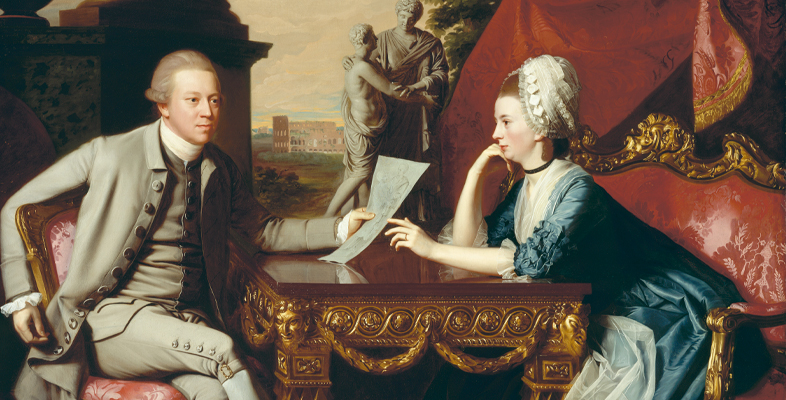1.2 The Colosseum in ancient poetry
We can learn something about the cultural significance of the newly-built Colosseum by reading the work of Martial. Born in what is now Spain in around 40 CE before moving to Rome in his twenties, Martial was a prolific poet who wrote hundreds of short poems called ‘epigrams’, often witty and satirical in tone, and covering a multitude of different subjects. His earliest surviving work was a collection of poems generally known by the title De Spectaculis (‘On the Spectacles’), written to commemorate the inaugural gladiatorial games which were held in the amphitheatre over a period of 100 days in 80 CE. Martial’s poetry was often overtly flattering to his imperial patrons, as the celebratory tone of the opening poem in the collection makes clear:
Let savage Memphis speak not of the Wonders that are her Pyramids; let Assyrian labour glory not in its Babylon; let the soft Ionians win no praise for their Temple of the Crossroads Goddess [Artemis]; let the close-packed altar of antlers lure no crowds to Delos; let not the Carians’ immoderate praises elevate their Mausoleum, swaying in empty air, unto the stars. Each labour resigns its title in favour of the Amphitheatre of the Caesars, and Fame shall speak of one marvel in place of all.
The poem catalogues some of the canonical Seven Wonders of the World – from the Hanging Gardens of Babylon to the spectacular Mausoleum of Halicarnassus – but, according to Martial, all are found wanting when compared to the new amphitheatre. Its future reputation is secure (almost as if Martial knew how it would still be revered as a symbol of Roman culture in the twenty-first century): the new Colosseum is already seen as a supreme embodiment of Roman power, overriding the ‘Fame’ of all of the other monuments.
Activity 1
Let’s turn to the next poem in Martial’s collection. Read the poem (reproduced below) and, as you read, think about the following questions:
- How does Martial continue his celebration of the Flavian Amphitheatre (the Colosseum) in this poem?
- What kind of opinion of the emperor Nero does Martial offer here?
Here, where the Colossus of the Sun views the stars close at hand and towering cranes rise up in mid-street, the hateful halls of a bestial king once dazzled, when in all Rome stood just one house. Here, where the spectacular Amphitheatre’s hallowed bulk is being raised up, was Nero’s lake. Here, where we marvel at the baths—gifts to the people, swift in coming—a regal estate had robbed the poor of their homes. Where the Claudian Portico spreads out generous shade, ended the palace’s most distant wing. Rome is given back to herself, Caesar, and under your guardianship her former master’s pleasures belong to her people.
Note your responses to the questions in the box below.
Discussion
There are a number of details that you might have picked out, and different ways of interpreting the poem, so don’t worry if your responses to these questions look different to the list below.
- The main tactic of this poem is a methodical and repetitive comparison between what used to be on this site (the Domus Aurea) and what is there now (the Colosseum). You might have noticed the repetition of the phrase ‘here, where...’, which has the effect of making us feel like we’re standing on the spot with the poem’s narrator, looking in awe at the things that he’s pointing out in front of us – the ‘spectacular Amphitheatre’ and its associated structures, such as the baths and the portico. These things are impressive and welcome in their own right – the Amphitheatre is ‘hallowed’, the building of the baths was ‘swift’, the portico offers shade – but the praise of the Amphitheatre gains so much more significance by being explicitly contrasted with what used to be there.
- In his references to the palace, Martial uses the Domus Aurea as a symbol of everything that was wrong with Nero and his regime. Although the palace ‘dazzled’ – reminding us that it too was visually impressive – Martial plays up (or exaggerates?) its size, pointing out its ‘distant wing’ and telling us that it was as if one house had taken over all of Rome, ‘robb[ing] the poor of their homes’ in the process. Lest we should be in any doubt about what these comparisons mean, Martial explicitly refers to the disgraced emperor as a ‘bestial king’, living in a ‘hateful’ palace, before ending with an address to the new emperor, Titus, praising him for having returned Rome ‘to herself’.
In his conclusion to the poem, then, Martial shows how the use of this part of Rome seemed to have radically changed thanks to the new dynasty of Flavian emperors. The provision of pleasures was still its main purpose, as the final line of the poem makes clear, but these were now pleasures provided for the masses, offering a sense of a shared culture that went far beyond the elite enjoyments housed in the Domus Aurea.
